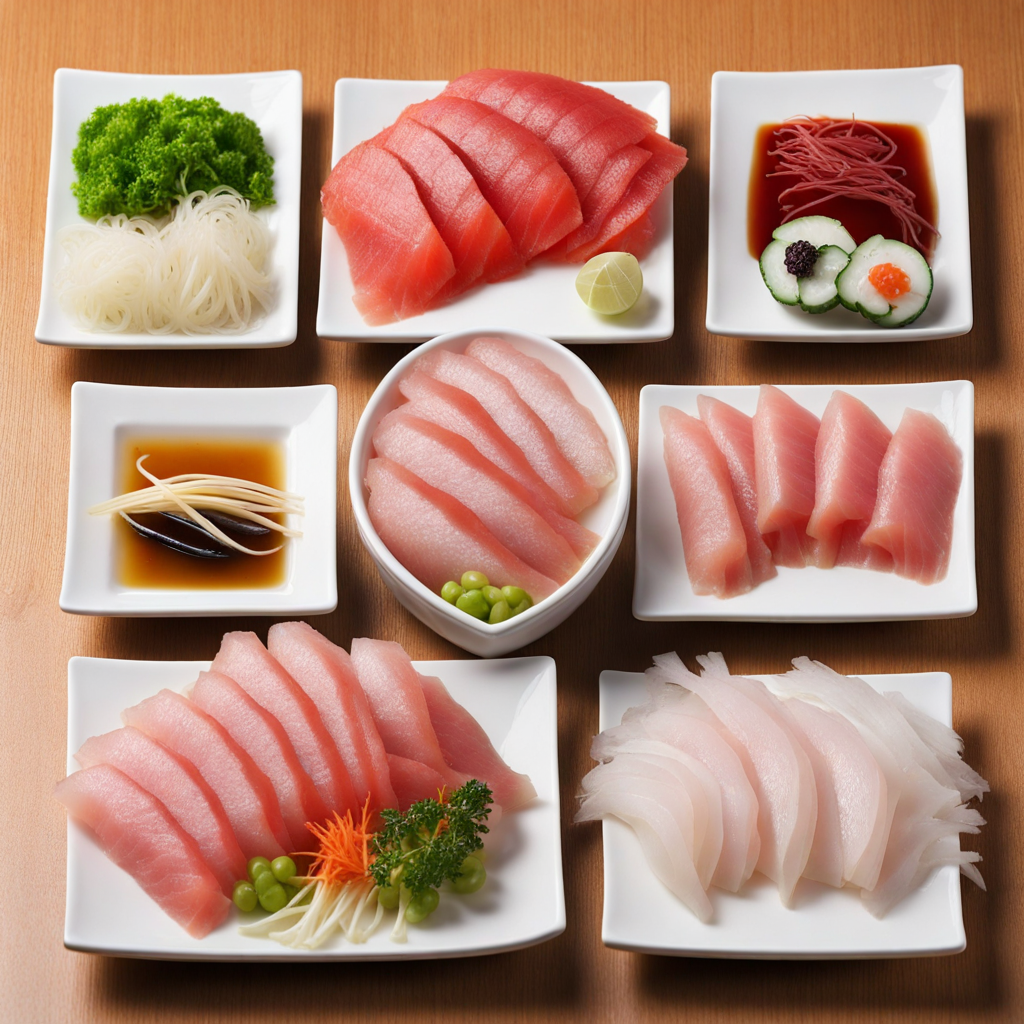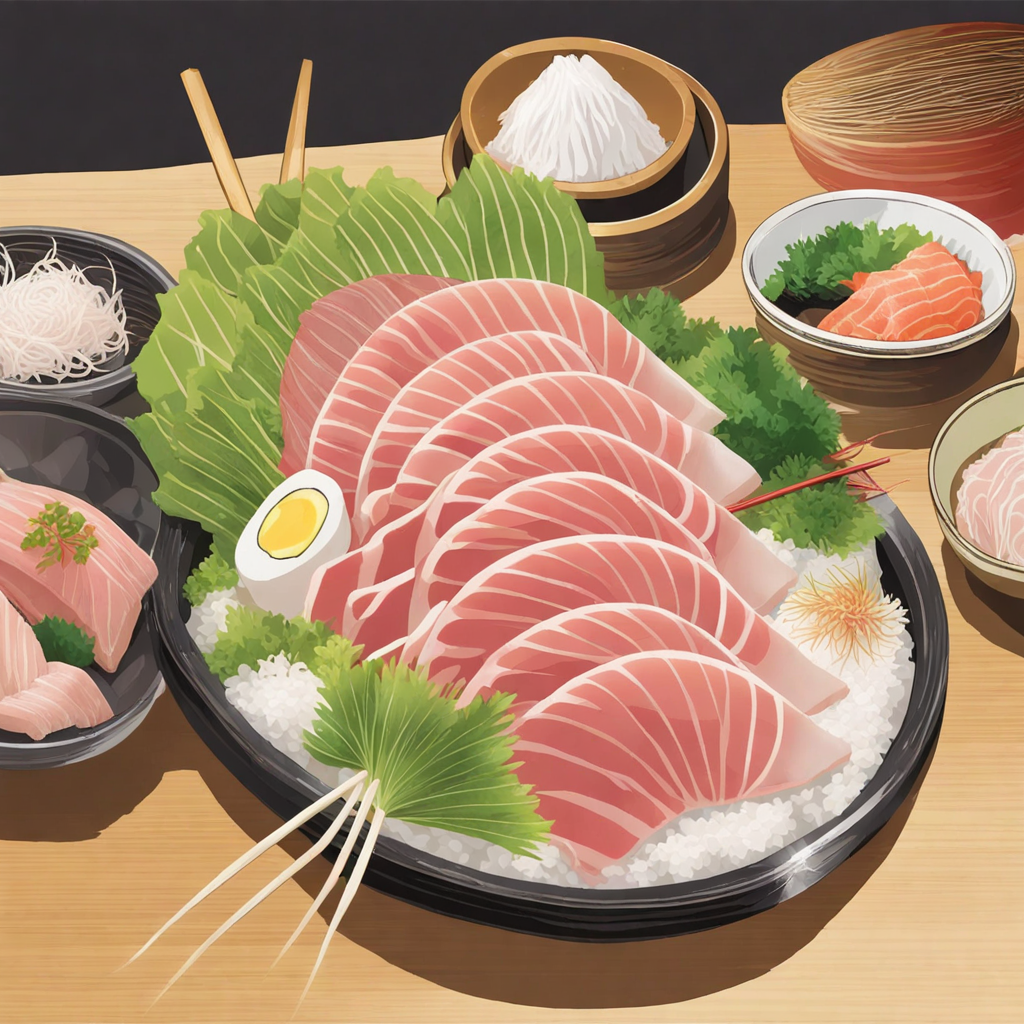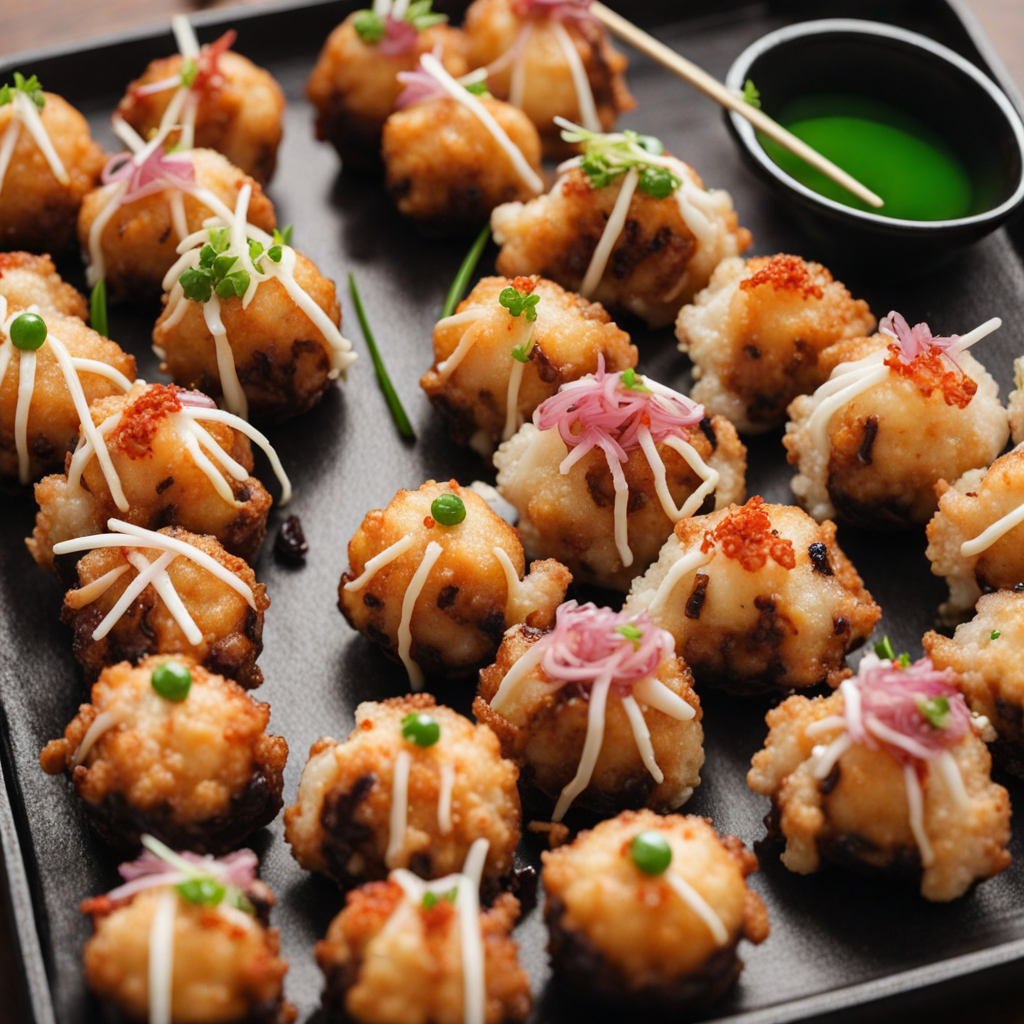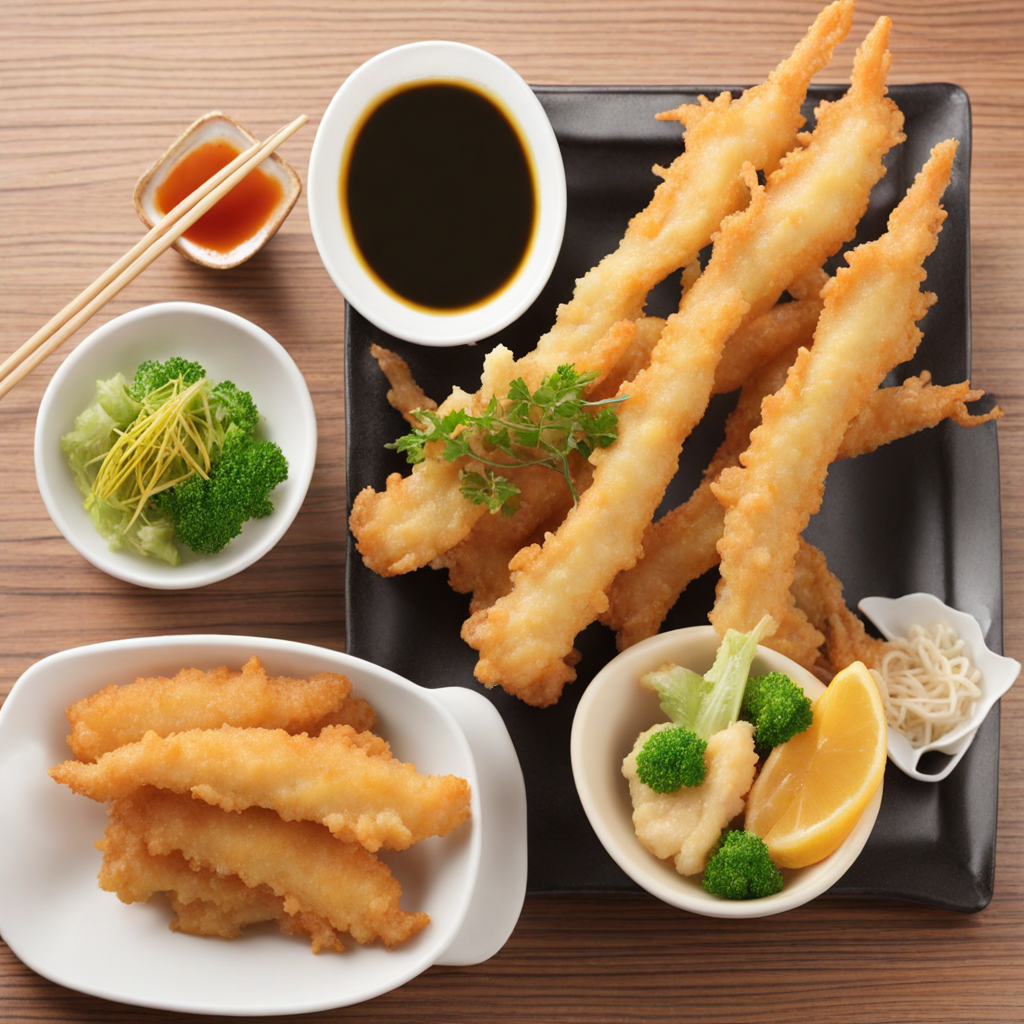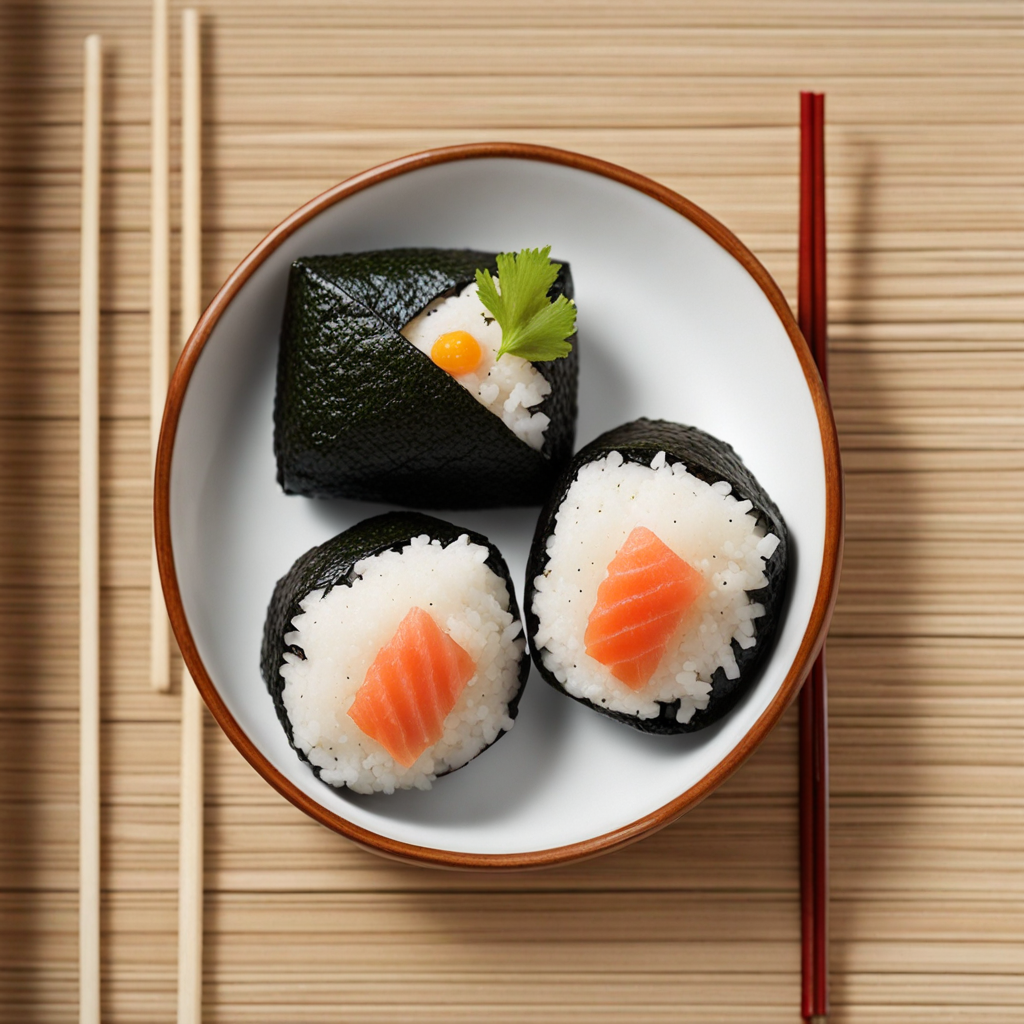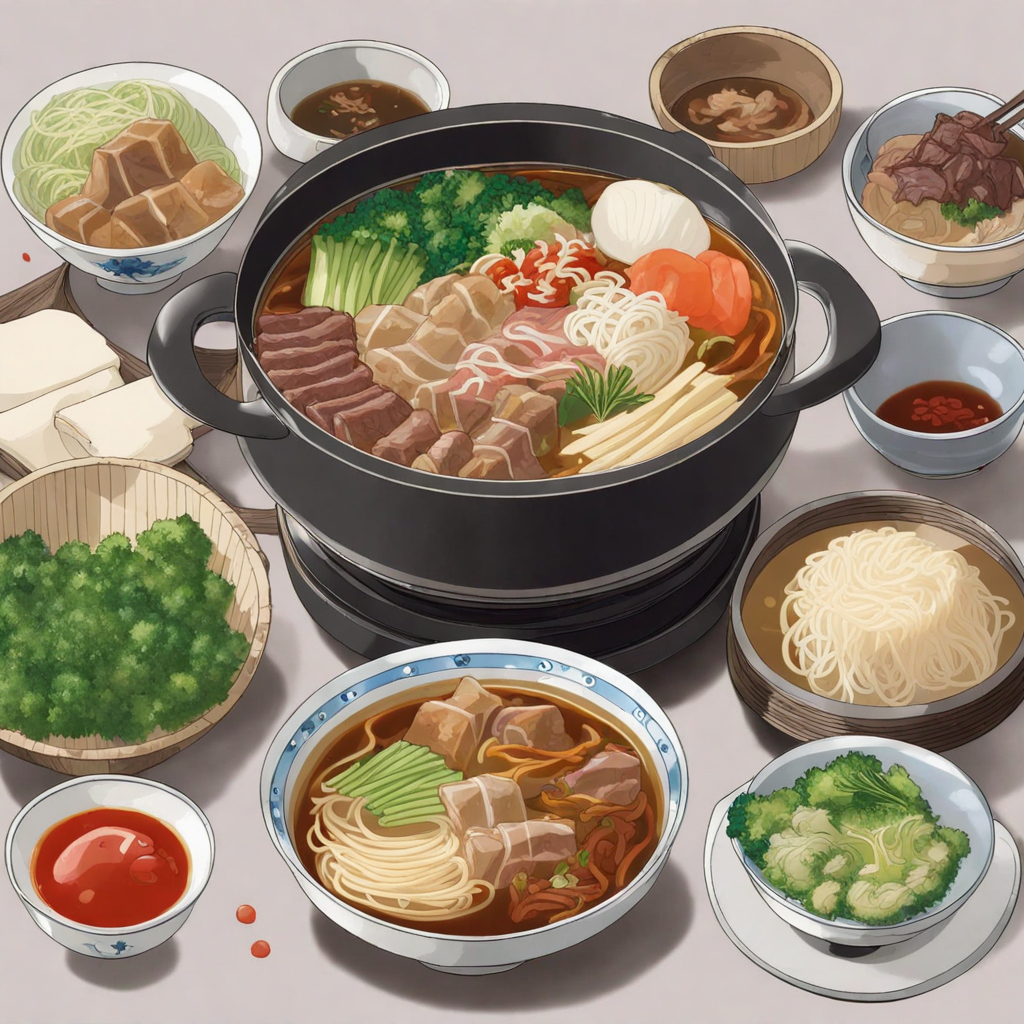Sashimi
Sashimi, a quintessential Japanese delicacy, consists of thinly sliced raw fish or seafood, elegantly presented and often served with minimal accompaniments. This dish emphasizes the freshness and quality of the fish, making it a staple in Japanese cuisine and a favorite among food enthusiasts worldwide. The history of sashimi dates back to ancient Japan, where it was originally consumed as a means of preserving fish. Over time, the preparation and presentation of sashimi evolved, becoming an art form that showcases the chef's skill and the ingredients' natural beauty. The flavor profile of sashimi is characterized by its clean, delicate taste, often enhanced by the inherent sweetness of the fish. Each type of seafood offers unique flavors and textures, with some being buttery and rich, like fatty tuna (otoro), while others may be more briny and firm, like mackerel (saba). The accompanying condiments, such as soy sauce, wasabi, and pickled ginger, enhance the experience by adding layers of flavor that complement the fish without overpowering it. The balance between the freshness of the fish and the sharpness of the condiments is crucial, creating a harmonious dining experience. Preparation of sashimi requires meticulous attention to detail, beginning with the selection of high-quality fish. Chefs typically source their seafood from reputable suppliers, ensuring that it is fresh and safe for consumption. The fish is then expertly filleted, with the chef employing precise knife skills to create thin, even slices. The thickness of
How It Became This Dish
Origin of Sashimi Sashimi, a quintessential Japanese delicacy, traces its origins back centuries, deeply intertwined with the country's rich maritime culture. The term "sashimi" literally means "pierced body" in Japanese, which refers to the way the fish is prepared—freshly sliced raw fish served without rice. Its historical roots can be linked to the development of sushi, a dish that evolved from a method of preserving fish in fermented rice. This practice, known as "narezushi," can be traced back to Southeast Asia and was introduced to Japan as early as the 4th century. However, the concept of sashimi as we know it today began to take shape during the Edo period (1603-1868), when urban populations in cities like Edo (modern-day Tokyo) started to appreciate the taste of fresh, raw fish. The availability of fresh seafood due to advances in fishing techniques and preservation methods played a crucial role in the popularization of sashimi. With the rise of a merchant class and the burgeoning of urban centers, the demand for high-quality, fresh fish surged. Fishermen began to prioritize the preparation of fish for immediate consumption, leading to the establishment of specialized markets where sashimi became a celebrated choice, often enjoyed with soy sauce, wasabi, and garnishes like daikon radish. \n\n Cultural Significance Sashimi is much more than just a dish; it embodies Japan's deep respect for nature, craftsmanship, and culinary art. The presentation of sashimi is considered an art form, showcasing the skill of the chef, known as "itamae." The meticulous attention to detail in slicing the fish—often against the grain to enhance texture and flavor—reflects a philosophy of appreciating the natural beauty and quality of the ingredients. Seasonal fish and local varieties are often prioritized, emphasizing a connection to the surrounding environment and the changing seasons. In Japanese culture, sashimi is often associated with special occasions and rituals. It plays a significant role in celebrations such as festivals, weddings, and New Year’s festivities, where it symbolizes purity and freshness. Furthermore, sashimi's cultural significance extends beyond mere consumption; it is a representation of harmony and balance. The dish is carefully paired with seasonings and garnishes, illustrating the Japanese culinary principle of "umami" and the importance of complementing flavors. This balance is not only essential to taste but also to the overall dining experience, which is often accompanied by sake or green tea. \n\n Development Over Time As Japanese society evolved, so too did the preparation and presentation of sashimi. During the Meiji period (1868-1912), Japan opened up to the West and underwent rapid modernization, which had a profound impact on its culinary traditions. The introduction of new ingredients and cooking techniques saw sashimi being adapted to suit a wider range of palates. This period also marked the emergence of sushi restaurants, where sashimi became a staple offering, catering to both locals and tourists. In contemporary Japan, sashimi varies widely, featuring not just traditional fish like tuna, salmon, and mackerel, but also seafood such as octopus, squid, and even shellfish. The appreciation for sashimi has also expanded globally, with many sushi bars and Japanese restaurants around the world incorporating it into their menus. International chefs have embraced sashimi, experimenting with fusion styles and innovative presentations, yet the essence of the dish remains rooted in its Japanese origins. The rise of food safety regulations and global supply chains has also influenced the sashimi industry. With advancements in refrigeration and transportation, high-quality fish can be sourced from around the globe, allowing for a diverse range of options. However, this has sparked debates about overfishing and sustainability, leading to a growing movement within Japan and internationally to promote responsible sourcing practices. \n\n Modern Interpretations In recent years, sashimi has undergone a renaissance, not only in Japan but also in global cuisine. Chefs are increasingly exploring unique combinations, such as pairing sashimi with unconventional ingredients like citrus fruits, herbs, and even hot oils, creating a new layer of flavor and texture. The trend of omakase dining—where chefs select and prepare dishes based on seasonal availability and personal expertise—has further elevated the sashimi experience, allowing diners to discover lesser-known fish varieties and innovative preparations. Moreover, the aesthetic appeal of sashimi has become a focal point in Japanese culinary presentations. The use of colorful garnishes, elegant plating, and artistic arrangements has transformed sashimi into a visual feast, making it a popular choice for social media sharing. This phenomenon has not only increased the popularity of sashimi but has also contributed to a broader appreciation of Japanese cuisine as an art form. Culinary schools and training programs around the world have also begun to incorporate traditional Japanese techniques, emphasizing the importance of knife skills and the understanding of fish varieties. This has led to a new generation of chefs who honor the traditions of sashimi while incorporating their own cultural influences, creating a dynamic and evolving culinary landscape. \n\n Conclusion Sashimi stands as a testament to the intricate relationship between food, culture, and nature in Japan. Its evolution from a means of preserving fish to a celebrated dish reflects broader societal changes and the enduring respect for the ocean's bounty. As sashimi continues to adapt and thrive in both traditional and modern contexts, it remains a symbol of Japan’s culinary heritage, inviting people around the world to savor its simplicity and elegance. Whether enjoyed in a formal setting or a casual izakaya, sashimi encapsulates the essence of Japanese cuisine—a harmonious blend of taste, artistry, and respect for quality ingredients.
You may like
Discover local flavors from Japan


